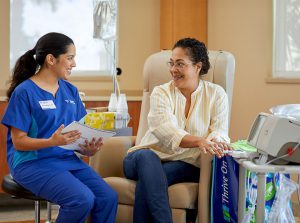Responsum for CKD
{{user.displayName ? user.displayName : user.userName}}
{{ user.userType }}

Why don’t more Americans use home dialysis? A recent study by the University of Alabama at Birmingham explores the barriers patients have faced in choosing home dialysis and presents some solutions to those problems.
Home dialysis options are significantly underutilized in the U.S.—plagued by low start rates and high attrition rates, especially during the first six months of use. As the U.S. faces rising rates of kidney disease and rising costs nationwide, the U.S. government seeks to improve and increase home dialysis as a treatment option.
In an effort to encourage and facilitate this transition, researchers at the University of Alabama at Birmingham (UAB) developed and implemented a program designed to address the major barriers to home dialysis utilization.*
Some of the barriers of effective and widespread home dialysis use include:
Research reveals that both patients and nephrologists feel undereducated about home dialysis options regarding their benefits and drawbacks, and the actual practical workings.

Insufficient pre-dialysis education has prevented many patients from choosing home-based dialysis methods. Most patient pre-dialysis education provides a brief description of in-center and home modalities and a few basic advantages and disadvantages of each. It doesn’t account for individual circumstances or preferences. As a result, many patients feel ill-equipped to have an informed say in their own healthcare decisions.
The UAB team found a more effective approach involving an organized program comprised of the following:
Nephrologist training has also fallen short. A 2010 study found that only 55.6% of recent nephrology graduates felt well-trained and competent in home-based peritoneal dialysis—dropping to 15.8% for home HD.
The study further revealed that nephrology trainees in the U.S.:
The UAB program established a comprehensive, structured curriculum for nephrology trainees that includes:
UAB also holds an annual 2.5-day course, called Home Dialysis Academy, which is usually attended by 40 to 50 trainees.
A team-based approach is crucial for providing seamless and effective home dialysis care. Led by a nephrologist, the team must include nurses, access coordinators, nutritionists, social workers, and surgeons.
Knowledgeable and available professionals are necessary for:
Unfortunately, this ideal has been hindered by:
UAB addressed these issues through:
Improved and innovative technology has made it possible for healthcare teams to provide better care for home dialysis patients, such as:
The experimental program proved successful in increasing and sustaining home dialysis use in microcosm, and it provided a model that encourages more people nationwide to choose home dialysis.
*Ahmad, M., Wallace, E.L., Jain, G. (2020, May 1). “Setting up and expanding a home dialysis Program: Is there a recipe for success?.” Kidney360.
Source: {{articlecontent.article.sourceName}}
Receive daily updated expert-reviewed article summaries. Everything you need to know from discoveries, treatments, and living tips!
Already a Responsum member?
Available for Apple iOS and Android
Add Comments
Cancel